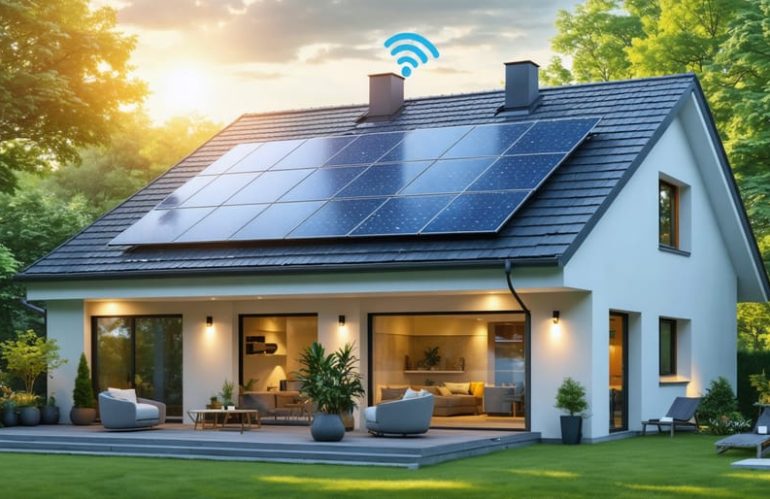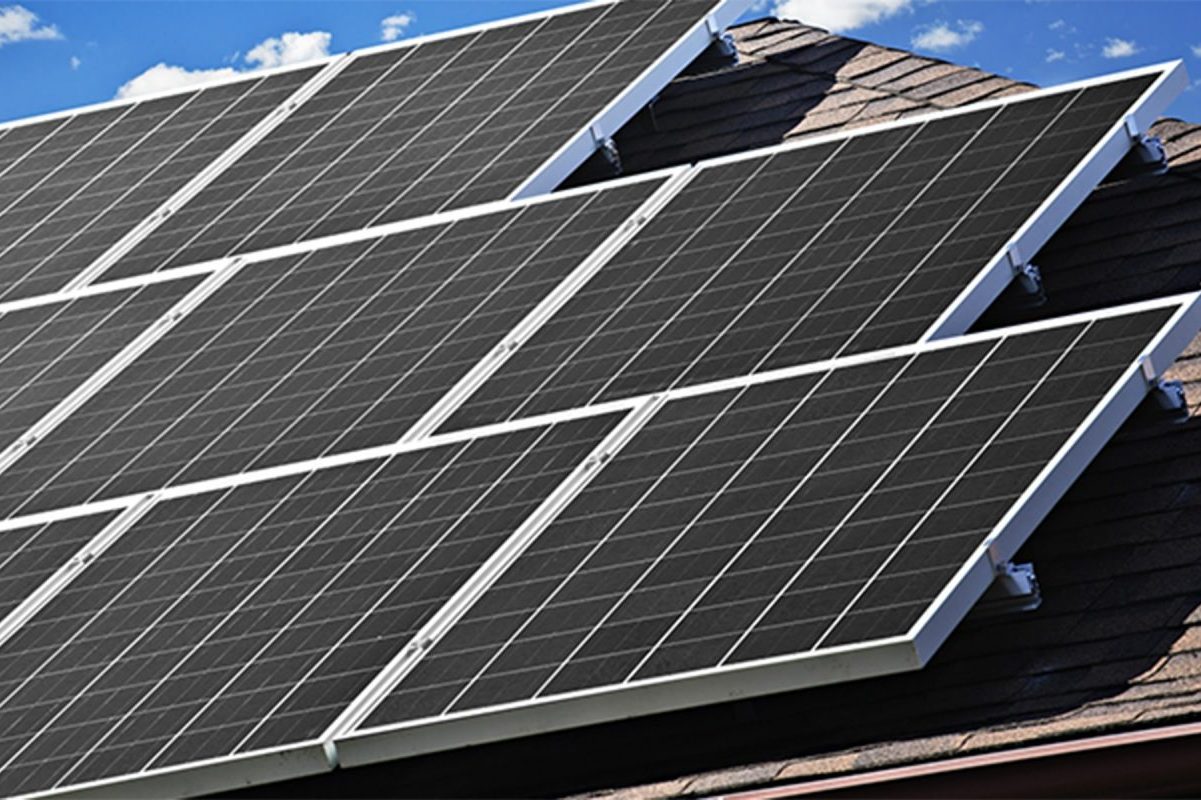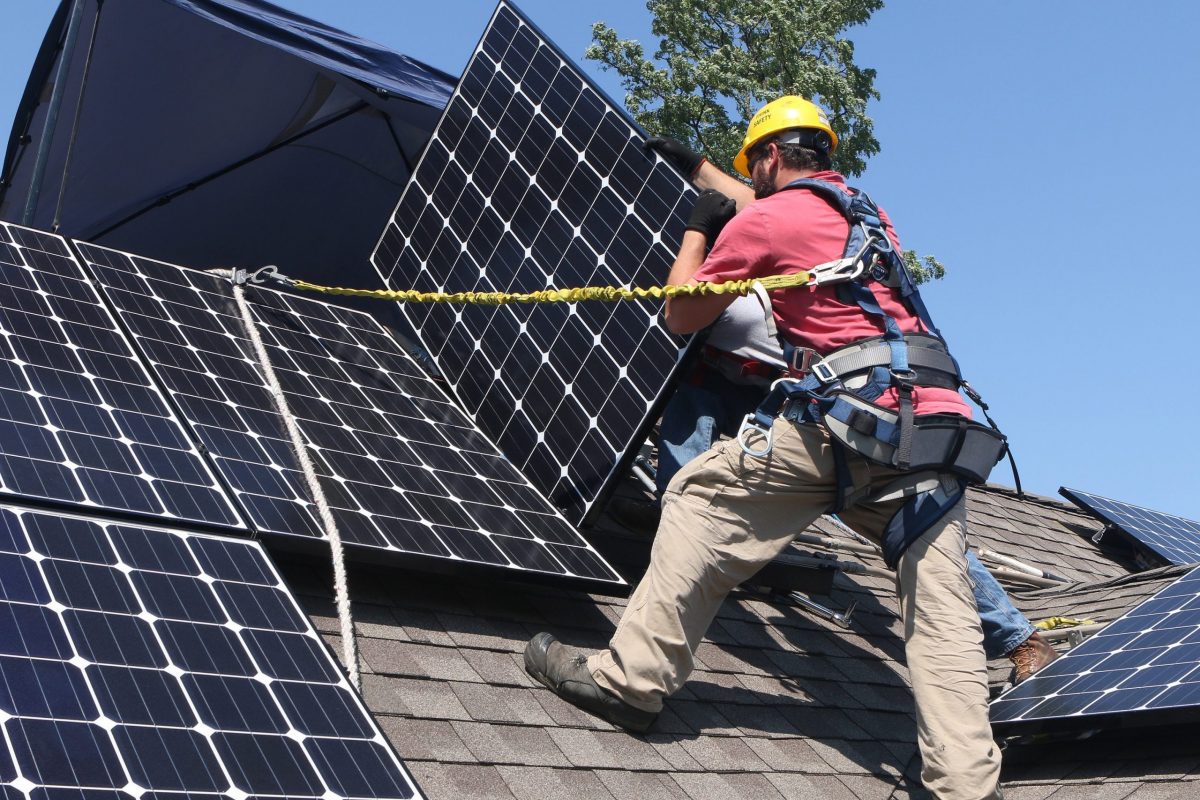Harness the sun’s unlimited energy to power your home’s internet connectivity with a solar-powered WiFi access point – a sustainable solution that keeps you connected even during power outages. By combining solar panels, batteries, and wireless technology, these innovative systems provide reliable internet access while reducing your carbon footprint and monthly utility bills.
Imagine maintaining crucial internet connectivity during storms, emergencies, or grid failures, all while utilizing clean, renewable energy. Solar-powered WiFi access points represent the perfect fusion of sustainable living and modern connectivity needs, offering homeowners independence from traditional power sources without sacrificing reliable internet access.
This technology has evolved significantly, now offering plug-and-play solutions that integrate seamlessly with existing home solar systems or function as standalone units. Whether you’re looking to extend internet coverage to remote areas of your property or create a resilient backup system, solar-powered WiFi access points deliver practical, eco-friendly connectivity for the modern home.
How Solar-Powered WiFi Access Points Work
Essential Components
A solar-powered WiFi access point consists of four key components working together to provide reliable internet connectivity. The solar panel array serves as the primary power source, converting sunlight into electricity. For residential setups, a 100-200 watt panel typically provides sufficient power, though requirements may vary based on usage patterns and location.
The battery bank acts as your system’s energy storage, ensuring continuous operation during nighttime and cloudy days. Deep-cycle batteries, particularly lithium-ion or AGM types, are ideal for their durability and efficient power storage. Most systems benefit from a 12V battery rated between 50-100Ah.
The charge controller manages power flow between your solar panels and batteries, preventing overcharging and extending battery life. A quality MPPT controller offers the best efficiency for residential systems.
For WiFi equipment, you’ll need a low-power wireless router or access point, typically consuming 5-15 watts. Modern outdoor-rated access points are ideal, offering weather resistance and extended range. Many users opt for mesh-capable units to expand coverage as needed.
Additional components include weatherproof enclosures, mounting hardware, and cables rated for outdoor use, ensuring your system remains protected from the elements while maintaining optimal performance.
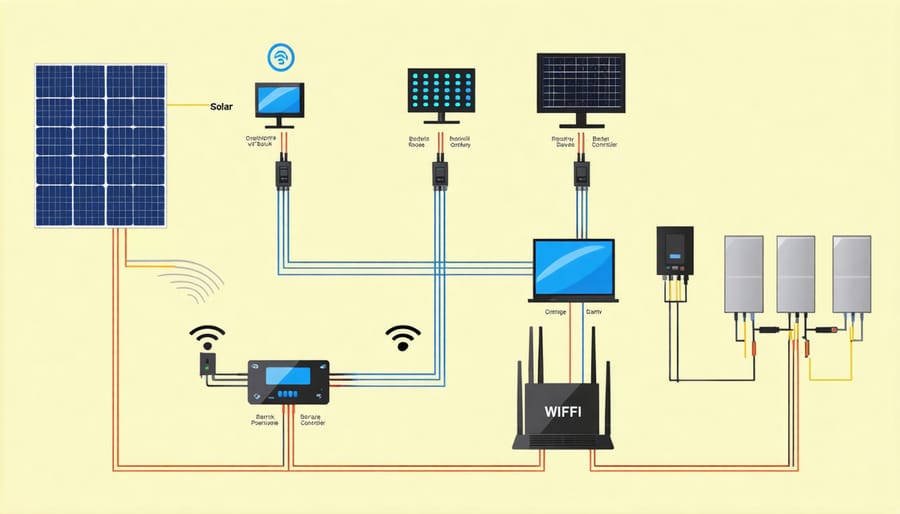
Power Management System
The power management system is the heart of a solar-powered WiFi access point, working like a well-orchestrated dance between sunlight and internet connectivity. Solar panels capture sunlight during the day, converting it into electricity that’s then stored in deep-cycle batteries. These batteries are specially designed to handle the constant charging and discharging cycles typical of solar systems.
A charge controller sits between the solar panels and batteries, ensuring optimal charging while preventing overcharging or battery damage. This smart device adjusts the power flow based on battery levels and available sunlight. The system also includes a power inverter that converts the stored DC power into AC power needed by the WiFi equipment.
To maintain reliable internet service, the system uses power-saving features like automatic dimming of indicator lights and smart power management that adjusts WiFi signal strength based on usage. Many modern systems include remote monitoring capabilities, allowing you to track power generation, battery levels, and system performance through a smartphone app. This helps ensure your WiFi access point runs efficiently while maximizing the use of clean solar energy.
Benefits for Homeowners

Uninterrupted Internet Access
One of the most compelling advantages of a solar-powered WiFi access point is its ability to maintain internet connectivity even during power outages. Unlike traditional WiFi setups that rely on grid power, these systems continue operating as long as there’s daylight, making them valuable components of disaster-ready power solutions. When storms knock out electricity or grid maintenance disrupts power supply, your internet connection remains stable and accessible.
The system’s battery backup ensures continuous operation during cloudy days and nighttime hours, typically providing 24-48 hours of uninterrupted service without direct sunlight. This reliability is particularly valuable for remote workers, students attending online classes, or anyone who depends on consistent internet access for daily activities.
Many homeowners find peace of mind knowing their communication channels stay open during emergencies. Whether it’s checking weather updates, contacting family members, or accessing emergency services, a solar-powered WiFi access point provides crucial connectivity when it’s needed most. The system’s independence from the grid also means you’re not subject to rising utility costs or service interruptions due to infrastructure problems, making it a smart investment in both sustainability and reliability.
Cost Savings and Energy Independence
Investing in a solar-powered WiFi access point can lead to significant cost savings over time while promoting energy independence. By harnessing free solar energy, homeowners can eliminate the ongoing electricity costs associated with powering traditional WiFi systems. The initial setup costs can be offset through various solar energy grants and incentives, making the investment more affordable.
A typical WiFi access point consumes about 6-12 watts continuously, which adds up to 50-100 kilowatt-hours annually. By switching to solar power, you can save $60-120 per year on electricity bills, depending on local utility rates. The system typically pays for itself within 3-5 years, after which the savings continue to accumulate.
Beyond financial benefits, solar-powered WiFi systems provide reliable internet access during power outages, ensuring continuous connectivity when you need it most. This independence from the grid is particularly valuable in areas prone to weather-related disruptions or unreliable power supply.
The system’s minimal maintenance requirements and long lifespan of 20-25 years make it a smart long-term investment for environmentally conscious homeowners seeking to reduce their carbon footprint while maintaining modern connectivity needs.
Installation and Maintenance
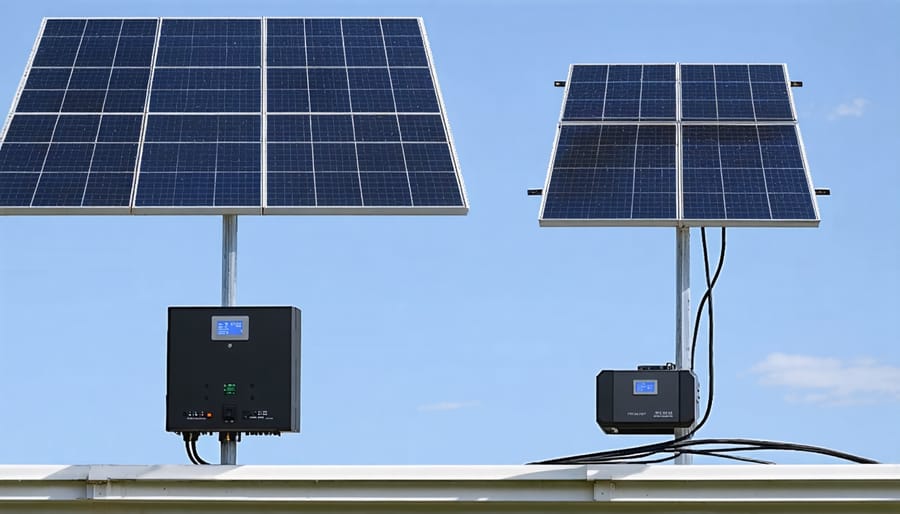
Optimal Placement and Setup
For optimal performance of your solar-powered WiFi access point, proper placement is crucial. Start by identifying a location that receives maximum sunlight throughout the day, typically south-facing in the Northern Hemisphere. The solar panel should be mounted at a 30-45 degree angle to maximize sun exposure and allow rain to naturally clean the surface.
Install the solar panel on your roof or a sturdy pole mount, ensuring it’s elevated enough to avoid shadows from nearby trees or buildings. The WiFi access point itself should be positioned centrally to provide the best coverage for your intended area, ideally mounted 15-20 feet above ground level.
Weather protection is essential – use waterproof housing for both the access point and the battery system. Place the battery bank in a cool, ventilated area to prevent overheating and extend its lifespan. Consider installing a small weatherproof cabinet to house the electronic components if they’re mounted outdoors.
Keep cable runs between components as short as possible to minimize power loss. Use UV-resistant cables and secure them properly to prevent wind damage. Install surge protectors to safeguard your equipment during electrical storms, and ensure all connections are properly sealed against moisture.
For year-round reliability, clean the solar panels seasonally and check all mounting hardware twice yearly. Consider installing a backup battery system for cloudy days and nighttime operation.
Simple Maintenance Tips
Keeping your solar-powered WiFi access point running smoothly requires minimal but regular maintenance. Clean the solar panels every three months using a soft cloth and water to remove dust, leaves, and bird droppings that can reduce efficiency. During cleaning, check for any physical damage or loose connections.
Monitor your battery system’s performance through its display panel or app. Look for unusual drops in charge levels or charging patterns, which could indicate a problem. Check all cable connections monthly, ensuring they remain tight and protected from the elements.
During winter months or extended periods of cloudy weather, you may need to adjust your WiFi usage to conserve power. Consider setting up automated power-saving modes during low-solar-production periods.
If you notice reduced WiFi performance, first check your solar panel’s positioning. Seasonal changes might require minor adjustments to maintain optimal sun exposure. Also, verify that your battery’s charge level isn’t consistently falling below 50%, as this could indicate a need for additional solar capacity or reduced power consumption.
For troubleshooting connectivity issues, start with the basics: restart the access point, check all connections, and ensure the solar charge controller is functioning correctly. Most problems can be resolved through these simple steps, but don’t hesitate to contact a professional if issues persist.
Remember to keep vegetation trimmed around your solar panels and maintain clear line-of-sight to prevent shading that could impact performance.
Making the Smart Choice
When selecting a solar-powered WiFi system, several key factors deserve careful consideration to ensure you make the right choice for your needs. First, assess your power requirements by calculating the total energy consumption of your WiFi equipment and any additional devices you plan to connect. This will help determine the appropriate solar panel capacity and battery storage needed.
Consider your location’s solar potential and weather patterns. Areas with consistent sunlight throughout the year may require smaller systems compared to regions with frequent cloudy days or seasonal variations. The system’s placement is equally important – ensure your solar panels will receive maximum sun exposure without obstruction from trees or buildings.
Battery capacity is crucial for maintaining reliable internet connectivity during nighttime and cloudy periods. Look for systems with high-quality lithium batteries that offer sufficient storage capacity and longer lifespans. As part of broader sustainable home power solutions, these systems should include smart charging controllers to protect your batteries and optimize power management.
Don’t forget to evaluate the WiFi access point’s range and speed capabilities. Choose weather-resistant equipment designed for outdoor use, and ensure the system includes proper surge protection and grounding features. Finally, consider the warranty period and availability of technical support when selecting both the solar components and WiFi equipment.
Solar-powered WiFi access points represent a significant step forward in sustainable internet connectivity. By harnessing clean, renewable energy to power our digital connections, we’re not just reducing our carbon footprint but also creating more resilient and independent networks. The combination of lower electricity bills, reliable internet access during power outages, and the satisfaction of contributing to environmental conservation makes this technology a worthwhile investment for any eco-conscious homeowner. As we move toward a more sustainable future, solar-powered WiFi systems demonstrate that we can maintain our digital lifestyle while being responsible stewards of the environment. Consider making the switch today – your wallet and the planet will thank you.

